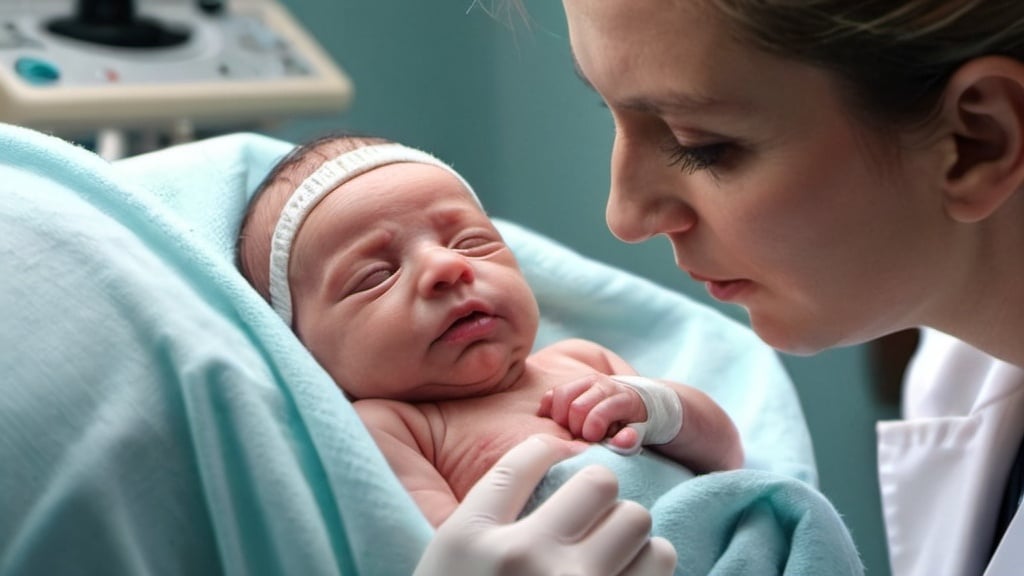1. Introduction
Although many parents have comfortable relationships with their doctors and feel they can ask anything, many more feel unsure about what is appropriate to ask at their child’s quickly-scheduled visits. Although you should check the status of your child’s visit (the majority of pediatricians check on newborn health frequently for a little while), you can see from a review of common questions asked during the first visit that you can and should ask your child’s doctor about anything concerning you. Please remember, too, that the information is intended for general informational purposes only and does not replace your doctor’s information. If you have any concerns, consult your child’s physician.
The first visit between a baby and their pediatrician is an opportunity for you to ask questions, to identify early issues, and to establish a relationship with your baby’s doctor. It’s a helpful visit for both of you. Remember that the birth process, new surroundings, and changing environment all create stress for your baby, who responds to those changes in various ways. In addition to dealing with the physical issues of your child’s post-birth life, the first visit to the doctor is also a time for you to have any questions about your child answered.
1.1. Purpose of the First Doctor Visit
Help orient the family to the health care system in an age-appropriate way. The expectation is that parents will begin to understand the process of well care before a problem warrants seeking medical advice, assisting them in being proactive protectors of their baby’s health and well-being. The standard of care is for pediatricians to review common newborn problems that may arise and answer parents‘ questions about these issues. This is more subtle at this visit, but emphasizes why the Parent’s Desk Reference was written – to make sure that these common problems are well understood. In the newborn period, the need for doctors to care for problems late at night is less common than in the older child, but more common than when the child is sick. This may sound trivial on first reading, but think about it for a moment!
Facilitate the transition to parenthood. That may sound like a simple thing, but as every parent can attest, this process is complex, scary, amazing, exciting, and overwhelming all at once.
Answer: This first visit is often tough for the parents too, not just for the baby. This newborn visit can best be understood by considering its intended purpose.
Question: All the brand-new things are frightening to me, including my baby’s first doctor visit. What happens there, and why do we have to go so soon after coming home from the hospital?
Initial doctor visit for baby, doctor sitting at desk showing a parent how to hold a baby.
2. Preparing for the Visit
Here are some things you can do to make the visit go more smoothly: – Plan the visit when your baby is hungriest so she may eat when desired. – Bring along several diapers. Typically, newborns will eat every two to three hours. – Be sure to bring enough formula or breast milk to last the visit. – Pick a simple, easily removable outfit for your baby. Getting a baby undressed and then trying to fit a hat over his head can be tricky. – Keep the baby warm as babies often are checked unclothed. They can become very cold when undressed. – Special thermometers and bottle warmers can be found in newborn departments. Stock these items before leaving the hospital. – Write down questions before the visit so you remember all. – Rely on staff in the private area for assistance. Let them provide formula, help feed and change the baby, and comfort your baby. – Bring a favored object like a pacifier or a favorite toy proven to calm the baby. – Keep older siblings at home. Mothers have a lot of explaining to do with young children and focus should be on the baby. – Avoid public areas. Anywhere you have to wait. Newborns’ immune systems are not yet fully developed. You do not want to expose her to illnesses. – If your baby is less than one month old, take her to the visit immediately. Even if you are registered with a pediatrician, immediate newborns are the exception and will need a visit with staff in their first few days of life.
2.1. Gathering Necessary Documents
If you haven’t done it already, the hospital where your baby is born will give you paperwork to officially register your baby’s birth. They can help you get a birth certificate and apply for your baby’s Social Security number. You need a birth certificate to add your baby to your health insurance plan. Do this as soon as possible after your baby is born to avoid paying for health care costs that should be covered by your insurance. Your baby’s doctor will want to see your baby’s birth certificate, a photo ID (such as your driver’s license), and your insurance information to prove that you are the baby’s parents. You also need to provide your baby’s record of being given newborn screening tests. The tests are required by state law, and the results are used to get early treatment for certain health problems. Your baby’s doctor may ask for your baby’s hospital discharge records. The records include information about your medical care while you were in the hospital when your baby was born and tell your baby’s doctor about your baby’s basic health status at birth.
3. What to Bring
– Extra outfits or onesie: In case a diaper leak or spit up accident occurs at the pediatrician’s office, bring extra onesies or full changes of clothes.
– Changing pad or mat: Also in case there’s a delay.
– Comfort items: Once again, this is to help comfort your baby, especially during a long wait time.
– Pacifier: Pacifiers can help comfort and calm your baby during what might be a stressful experience or during a long wait time.
– Packed diaper bag: Obviously, it’s essential to have a fully stocked diaper bag at all times, but if you’re not well-stocked for the pediatrician interview for any reason, you can always buy essentials at the store right after! Including two to three emergency bottles containing milk or formula is essential, as the first wellness exam is a baby’s first lengthy trip away from home.
– Your baby’s medical history: Bring a record of your child’s birth data, feeding schedule, bowel movement schedule, medical history, and family medical history.
Make sure to pack these important items in your diaper bag the day before your baby’s first well exam. Being prepared will make your baby’s check-up run smoothly and your life less stressful.
3.1. Essential Items for the Visit
You should ask where you should take your child if you have a sick newborn and the Pediatric Center is closed. If the answer is the local emergency room, can the Pediatric Center help with making arrangements for your baby to be seen? And finally, what are the practices’ coverage protocols when family members become sick in the coming months?
– A complete list of current medications or what the dose has been if the drug was stopped, plus a complete list of the names and addresses of the healthcare providers who are actively providing care. – An accurate weight measurement. Again, this is the most important item for judging well-being in an apparently well baby who is not nursing well. In the first two weeks of life, if a newborn who has not regained their birth weight is assessed to be at risk for dehydration, then it is appropriate to initiate a supplement of 10 ml/feeding of formula after breastfeeding. If the newborn is not hungry, hand-expressing a small amount of breast milk and dipping the corner of a pacifier in the expressed breast milk may stimulate feeding. Prior to initiating formula supplements, the healthcare provider may refer to a lactation consultant or nurse to assist the parent/traveling companion with breastfeeding. Keep in mind that temporary formula supplements should be weaned while the newborn is transitioning to the milk supply. It is important to stick with the plan of follow-up, as abruptly discontinuing formula supplements might put the baby at unnecessary risk. Furthermore, abruptly discontinuing formula may cause irritability and sweating in some babies. If possible, the newborn should be seen within one or two days, and then again in one or two days. – A fever diary or the baby’s temperatures over two different time intervals so that details at each episode of fever can be discussed. – Your baby’s insurance card and co-pay. – The scores for jaundice would be reasonable, but the healthcare provider would also want to see the infant in person.
4. Common Procedures During the Visit
• Caring for your baby. You will undoubtedly have many questions about how to care for your new baby. The pediatrician is an excellent resource to help answer these questions. Don’t be afraid to ask questions about anything on your mind.
• Jaundice and Bilirubin. If there was any jaundice detected in the hospital, the pediatrician will ask how that has been since leaving the hospital. It is possible that there will be another evaluation of your baby to check how yellow the skin is (or, in some cases, the whites of the eyes).
• Feeding. When the pediatrician is done with the physical exam, he or she will likely discuss your baby’s feeding – whether breast or bottle and, of course, how things are going for both mom and baby.
• Physical examination. Expect your pediatrician to spend significant time performing a detailed physical exam on your baby. This will include taking your baby’s weight, length, and head circumference. You may want to bring a blanket or special outfit that you received in the hospital for the pediatrician to take a picture of your baby.
4.1. Physical Examination
Also, note the appearance of your baby’s sleep-wake cycles and behavior. This will be documented in their medical record and will be followed during future visits to compare and ensure its accuracy through the years.
Vital signs: heart rate, respiratory rate, blood pressure, and body temperature. Presence of a birthmark or stork’s bite (Salmon patch). If a baby has a stork’s bite, the skin will be pink or red and may turn a darker color when the baby is crying. Stork bites are due to the nature of blood vessels at the surface of the skin and are very common (more than 95% of newborns have one). They usually disappear by six months of life. Skull shape, physical features, or deformities. Visual systems exam: pupils, red reflex (a normal response to light when the back of the eye is viewed with an ophthalmoscope), and eye muscle movements. Hearing: listening to the baby’s cry will be enough to know if the baby has any problems with hearing. Checking full range of passive motion and spine deformities. Listening to the baby’s heart. During the baby’s first visit to a healthcare provider, a stethoscope will be used to check the baby’s heart and lungs. Checking the baby’s umbilical cord: checking for bruising, foul smelling, or pus may mean an infection. Checking the baby’s hips: assessment is performed during every exam as a part of any discussion on how the baby should be picked up and held. Oral exam to ensure presence of a cleft lip or cleft palate. A normal oral exam result is important for breastfeeding.
Checking a baby’s physical condition at birth is critical. At birth, the doctor or midwife will visually inspect your baby for obvious signs of abnormalities. If anything of concern is noted, several tests may be performed to more thoroughly assess your baby’s condition. Most newborn series will check for the following:
5. Frequently Asked Questions
My baby sleeps a lot in the first few days, and I have problems waking him to feed him eight times each day. What should I do? Tickle his feet, change his diaper, unwrap him, and use a cold cloth to help keep him awake. If these steps don’t help, seek guidance from your newborn’s health care provider.
How am I supposed to know when my baby is hungry? My baby is fussy and pulls away and arches his back. It is hard to feed him. Try feeding him earlier, before he is so hungry. The earlier the baby looks alert and sucks on their hands, the better the feed will be. Let your baby show signs of hunger other than crying. It is easier to feed a baby who is willing to feed. Try “sucking” time for comfort before trying feeding.
My friend had to wake her baby during the night to feed him, but my baby wakes on his own. Is something wrong with my baby? If anything is wrong, it is that your baby is too quiet. Be sure that he is breastfeeding well. Well-fed babies feed more often. Return to have baby’s weight checked weekly (after daytime feeds) until it becomes closer to birth weight.
5.1. When Should the First Visit Take Place?
Parents of preterm and low birth weight babies may need to bring their newborn in sooner. The doctor or hospital staff can advise those parents about when to schedule the first visit. Premature babies are at greater risk for having certain health problems that might need to be closely watched or addressed right away. A small or early baby’s first visit usually will be scheduled by the time he or she is discharged from the hospital.
The American Academy of Pediatrics (AAP) and the American College of Obstetricians and Gynecologists (ACOG) both recommend that newborns have their first doctor visit three to five days after birth. Babies who leave the hospital shortly after they’re born should have a follow-up appointment within three days after going home. After that, the next well-baby visit should take place around 1 month of age.
Eager to dive deeper? Visit us for more information!
References:
Simões, Eric AF, et al. “Efficacy of nirsevimab against respiratory syncytial virus lower respiratory tract infections in preterm and term infants, and pharmacokinetic extrapolation to infants with congenital heart disease and chronic lung disease: a pooled analysis of randomised controlled trials.” The Lancet Child & Adolescent Health 7.3 (2023): 180-189. nih.gov
Ronchi, Andrea, et al. “Evaluation of rooming-in practice for neonates born to mothers with severe acute respiratory syndrome coronavirus 2 infection in Italy.” JAMA pediatrics 175.3 (2021): 260-266. jamanetwork.com
Oldenburg, Catherine E., et al. “Neonatal azithromycin administration for prevention of infant mortality.” NEJM evidence 1.4 (2022): EVIDoa2100054. nih.gov
WHO Immediate KMC Study Group. “Immediate “kangaroo mother care” and survival of infants with low birth weight.” New England Journal of Medicine 384.21 (2021): 2028-2038. nejm.org
Oktaria, Vicka, et al. “The incidence of acute respiratory infection in Indonesian infants and association with vitamin D deficiency.” PloS one 16.3 (2021): e0248722. plos.org
Wildenbeest, Joanne G., et al. “The burden of respiratory syncytial virus in healthy term-born infants in Europe: a prospective birth cohort study.” The Lancet Respiratory Medicine 11.4 (2023): 341-353. nih.gov
Gabriel, Miguel A. Marín, et al. “Maternal, perinatal and neonatal outcomes with COVID-19: a multicenter study of 242 pregnancies and their 248 infant newborns during their first month of life.” The Pediatric infectious disease journal 39.12 (2020): e393-e397. bvsalud.org
Dimmock, David, et al. “Project Baby Bear: Rapid precision care incorporating rWGS in 5 California children’s hospitals demonstrates improved clinical outcomes and reduced costs of care.” The American Journal of Human Genetics 108.7 (2021): 1231-1238. cell.com
Korpela, Katri, et al. “Maternal fecal microbiota transplantation in cesarean-born infants rapidly restores normal gut microbial development: a proof-of-concept study.” Cell 183.2 (2020): 324-334. cell.com
, T. and , 2020 “… Mother Care initiated immediately after birth (iKMC) on survival of newborns with birth weight between 1.0 to< 1.8 kg: study protocol for a randomized controlled trial.” Springer, . springer.com
Keywords: what to expect at newborn’s first doctor visit, common questions for baby’s first appointment, understanding pediatric check-up procedures, first doctor visit expectations, newborn healthcare inquiries, preparing for baby’s initial check-up, essential information for new parents, topics discussed during first visit, milestones assessed at newborn appointment, guidance for first-time parents.






